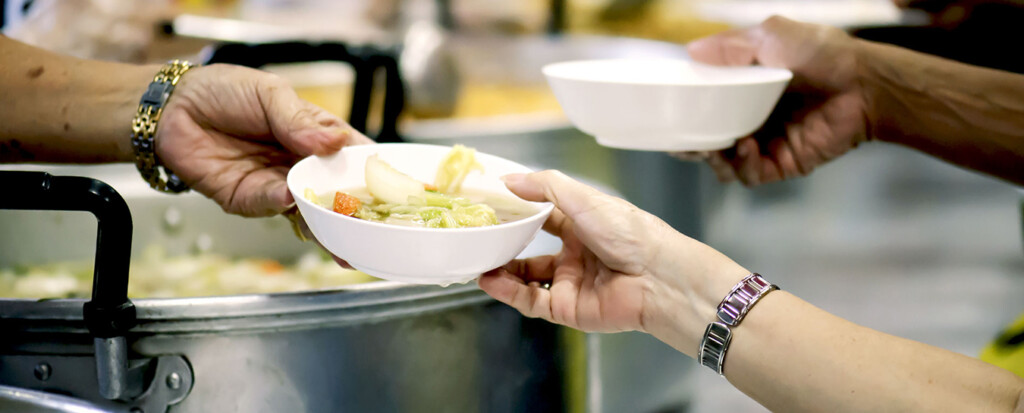La Inseguridad Alimentaria
Por Harper Henson, La Vida De La Universidad De Dietética Intern
What is food insecurity?
Food insecurity is defined as the state of being without reliable access to a sufficient quantity of affordable, nutritious food.
1An estimated 10.5 percent or about 35 million of U.S. households were food insecure at least some time during the year in 2019, meaning they lacked access to enough food for an active, healthy life for all household members.
It is estimated for that number to be increased with the Covid-19 pandemic, possibly affecting every 1 in 5
households or 50 million people due to employment cuts.
How to determine Food Insecurity?
Research studying the population is called epidemiology which gathers information through surveys, which food security uses specific questionnaires through the USDA’s U.S. Household Food Security Survey Modules. There is a short and long form to fill out as well as based on household size to determine food security levels which are defined by the USDA as:
● High food security: no reported indications of food-access problems or limitations.
● Marginal food security: one or two reported indications—typically of anxiety over food sufficiency or shortage of food in the house. Little or no indication of changes in diets or food intake.
● Low food security: reports of reduced quality, variety, or desirability of diet. Little or no indication of reduced food intake.
● Very low food security: reports of multiple indications of disrupted eating patterns and reduced food intake.
Research in College Students
As a graduate nutrition student, I did research on the prevalence of food insecurity in college students and how it impacts their resilience.3 My research was in the form of a cross-sectional survey with a questionnaire composed of 27 questions. The USDA’s U.S. Household Food Security Survey Module: Six-Item Short Form (HFSSM) was used to determine food security level and participants would respond on a scale ranging from very often to not at all. The results would then be categorized following the coding of the HFSSM to high/marginal food security, low food security, and very low food security. To measure resilience, 13 questions were created from the Resilience Self Care Workbook, six core powers of resilience from the subsection “the power of life quality”. The questions to measure resilience was based on quality of life on the participant’s perception of stress, depression, irritability, anxiety, risky behavior, counseling, spiritual guidance and religiosity within the last 12 months. Answers to the following questions were “very often, often, neutral, not often, or not at all”. Follow-up answers included the participants ranking of their severity on a 1 to 10 Likert scale, 1 being not and 10 being extremely. The remaining questions were demographic characteristics of gender, race, ethnicity, residency status, GPA, and employment status.
There were a total of 190 students to complete the survey to be used for statistical analysis to see if there was a correlation between food insecurity and resilience in quality of life factors using a chi-square test. Demographic and quality of life responses were included in frequency distribution with descriptive analysis. Basic statistics showed that the majority of the students were white women and between ages 19 to 22 years old, which does match up to the
universities demographics. Their GPA status was reported above a 3.0 and half were off campus as well as half had a part time job while a sixth of the students had a full-time job.
For the total food insecurity rates, it affected 39% of the students that participated, while 61% were food secure. Rates of food insecurity in this study were found to be almost four times higher than the national average, as well as comparable to other studies that reported levels between 14% to 59%. Out of the food insecure students, low food security impacted a quarter of participants (24.7%) with just under a sixth (14.1%) for very low food security. In relation to quality of life as a measure of resilience, students reported an average of 6.7 for stress,
relation to quality of life as a measure of resilience, students reported an average of 6.7 for stress,
4.5 for depression, and 5.8 for anxiety. The food insecurity and resilience scores did not have a significant correlation except for depression (p=0.048). While analyzing residency status in relation to food security, our study shows that those who lived off campus were more likely to be food insecure than those who did.
Limitations to the study also may have impacted the results lacking in significance as there was a small sample size. Additionally, food insecure students should have been put into one group versus separated into low and very low to make the data easier to compare in statistical analysis. Despite the results, it does not mean there is no relationship possible between the two as this research was considered a pilot study. Further research is needed to understand how much stress related to food insecurity is too much to handle before resilience is impacted as well as to confirm the possible correlations with depression and other quality of life variables.
Sources
1. Definitions of Food Security. Ers.usda.gov.
https://www.ers.usda.gov/topics/food-nutrition-assistance/food-security-in-the-us/definitions-of-f
ood-security.aspx. Published 2020. Accessed March 7, 2021.
2. Household Food Security in the United States in 2019. Ers.usda.gov.
https://www.ers.usda.gov/publications/pub-details/?pubid=99281. Published 2020. Accessed
March 7, 2021.
3. Food Insecurity and Poverty in the US. Feedingamerica.org.
https://www.feedingamerica.org/sites/default/files/2020-10/Brief_Local%20Impact_10.2020_0.p
df. Published 2020. Accessed March 7, 2021.
4. Henson H, Koszewski W, Licata A, Blomstedt C, Rollinson A, Marrow S. Does Food
Insecurity Impact Resiliency in College Students a Pilot Study. J Acad Nutr Diet.
2020;120(9):A79. doi:10.1016/j.jand.2020.06.067

